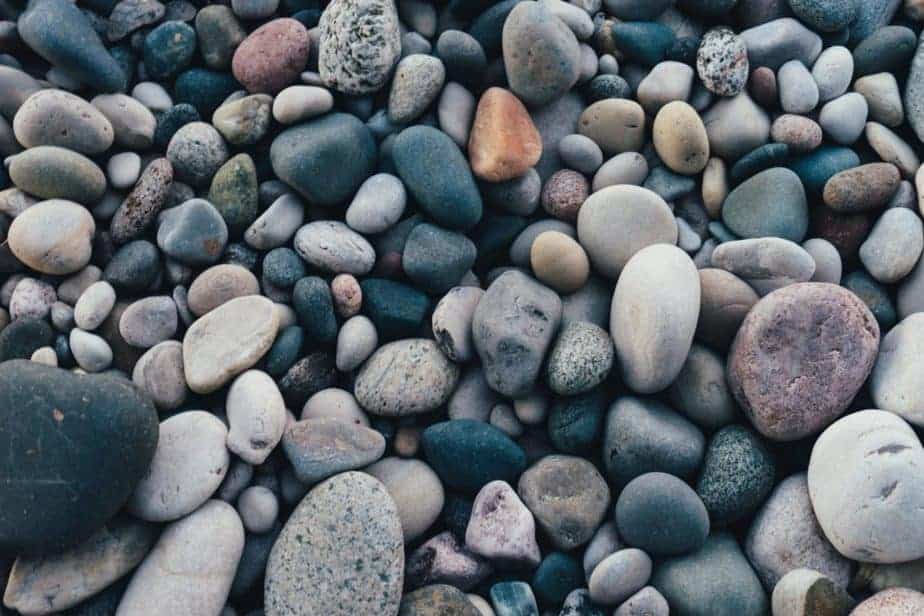Table of contents
Nebula Genomics DNA Report for Kidney Stones
Are kidney stones genetic? We created a DNA report based on a study that attempted to answer this question. Below you can see a SAMPLE DNA report. To get your personalized DNA report, purchase our Whole Genome Sequencing!


What are Kidney Stones?
A kidney stone, renal calculus, or nephrolith occurs when a solid piece of material forms in the urinary system, usually due to a high concentration of minerals in the urine. This condition also goes by the names nephrolithiasis and urolithiasis.
Patients usually develop stones in the kidney and are easily passed through urination. If they are small enough, patients may not have any symptoms. However, as they grow larger, they can lead to a block the flow of urine and cause reactions such as sharp pain in the lower back or abdomen, blood in urine, or painful urination.
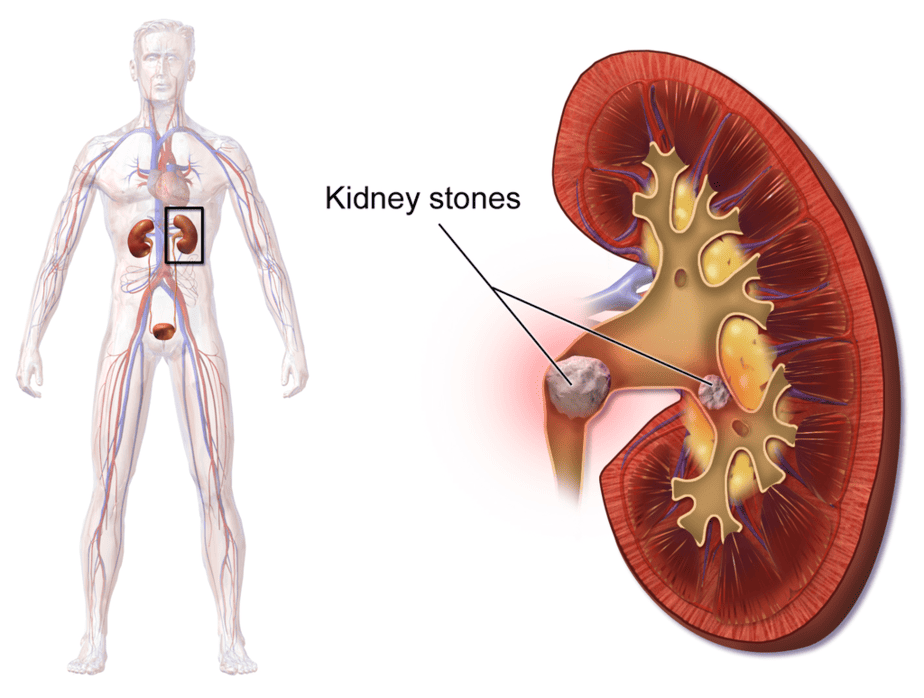
The condition is often the result of genetic and environmental factors. Risk factors for kidney stones include excess calcium levels, obesity, certain foods, medications, calcium supplements, hyperparathyroidism, gout, and not drinking enough fluids. Other diseases such as high blood pressure and diabetes may also put you at higher risk of developing kidney stones.
Classifications
Doctors can diagnose through symptoms, urine testing, imaging, and blood tests. The type of kidney stone is based on its location and its composition. The four main types are classified according to kidney stone composition and are:
Calcium stone: This is the most common type. Calcium oxalate stones form when calcium mixes with oxalate in the urine. They can also be present in the form of calcium phosphate stones.
This type is more common in patients with metabolic conditions such as renal tubular acidosis. Not getting enough calcium or fluids can also be a factor.
Uric acid stones: This form is also common. Foods with high concentrations of purines, such as shellfish, can lead to a higher production of certain chemicals that cause calculi. This form tends to run in families through autosomal recessive genes.
Struvite stones: Less common, an infection in the urinary tract causes this condition.
Cystine stones: This rare form of the condition most likely has a hereditary component as it has been shown to run in families. It occurs when amino acids called cysteines build up in the urine.
Doctors do not treat this condition if no symptoms are present. Instead, patients will wait to see if they can pass kidney stones normally through the urine. If pain or other symptoms are present, your doctor will usually recommend certain medications to treat the pain. If the stones are large and unable to pass naturally, doctors may recommend different drugs and procedures to assist with this.
Patients who have had calculi in the past are usually prescribed enough fluids and some additional medications to prevent a recurrence. Unfortunately, even with prevention methods, most patients will experience kidney stones again in their lifetime.
Are Kidney Stones Genetic?
Experts largely believe that kidney stones are a combination of environmental, lifestyle, and genetic factors.
Are kidney stones hereditary? Although the inheritance pattern is unknown, it has been observed that those with a close relative (such as a parent or sibling) with the condition are more likely to develop it themselves.
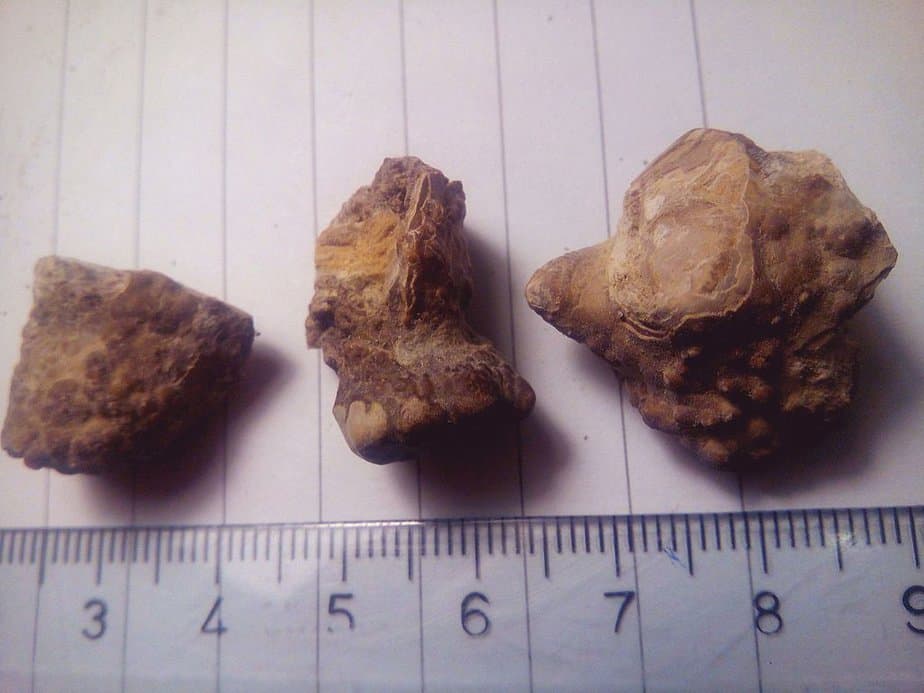
The exact genes that contribute to the condition are largely unknown. In calcium-oxalate subtypes, the most common form, genome-wide association studies have identified only a handful of genetic variants known to be associated with kidney stones:
CLDN14: This gene codes for an integral membrane protein and is a component of tight junctions, one way that cells adhere to each other.
TRPV5: Genetic variants in this gene codes for a calcium channel protein, which relates to a higher risk of kidney stones if it means calcium is increased.
SLC34A1: This gene codes for a protein that helps regulate phosphate levels in the body.
ALPL: This gene codes for an enzyme that plays an important role in the growth and development of bones and teeth. It is also active in the liver and kidneys.
CASR: This gene codes for a protein that helps monitor the amount of calcium in the blood. Variants can lead to too high of accumulation.
UMOD: This gene provides instructions for making a protein produced exclusively in the kidneys. While its function is unknown, it is the most abundant protein in urine and may help protect individuals from urinary tract infections.
Current Genetic Research on Kidney Stones
In 2017, a group of Japanese, American, and German researchers made a systematic review of the literature on genetic risk factors for idiopathic urolithiasis. They found evidence of the involvement of some genetic factors responsible for kidney stone formation.
Another interesting review and meta-analysis in 2018 clarified the association between diabetes, body fatness, and physical activity, and an increased risk of kidney stones. The study found an association with diabetes and adiposity but not physical activity.
There have also been numerous studies on the effectiveness of some treatments. This study examines ureteroscopy combined with laser stone fragmentation and basketing. In 2020, Chinese physicians found the effects of increased water intake for the prevention of urinary stone formation. You may also want to look at this study on alpha-blockers after shock wave lithotripsy for renal stones in adults.
Epidemiology
The condition is one of the most common urological conditions in the world. In 2012, experts estimated that 10.6% of men and 7.1% of women in the United States would develop it. Estimates indicate that over half a million people visit the emergency room due to the condition each year.
Overall, the prevalence of kidney stones has increased over the years. In the 1970s, it was around 4% rising to about 9% in the late 2000s and 10% during 2013-2014. By 2016, it had increased to 10.1%.
Men have consistently been at higher risk than women. There is also a higher prevalence in white, non-Hispanic individuals than in other populations.
A limitation of measuring the prevalence of this condition is that many asymptomatic cases are not reported. Therefore, the total percentage of the population with kidney stones may be much higher.
Symptoms
A kidney stone is a solid piece of material. The larger the kidney stone, the more likely a patient will experience symptoms. Sometimes, they are so small that an individual may not realize it occurred.
However, some are as large as pebbles while others can be the size of golf balls. Some of the more common symptoms include:
- severe pain on either side of your lower back
- more vague pain or stomach ache that doesn’t go away
- blood in the urine
- nausea or vomiting
- fever and chills
- urine that smells bad or looks cloudy
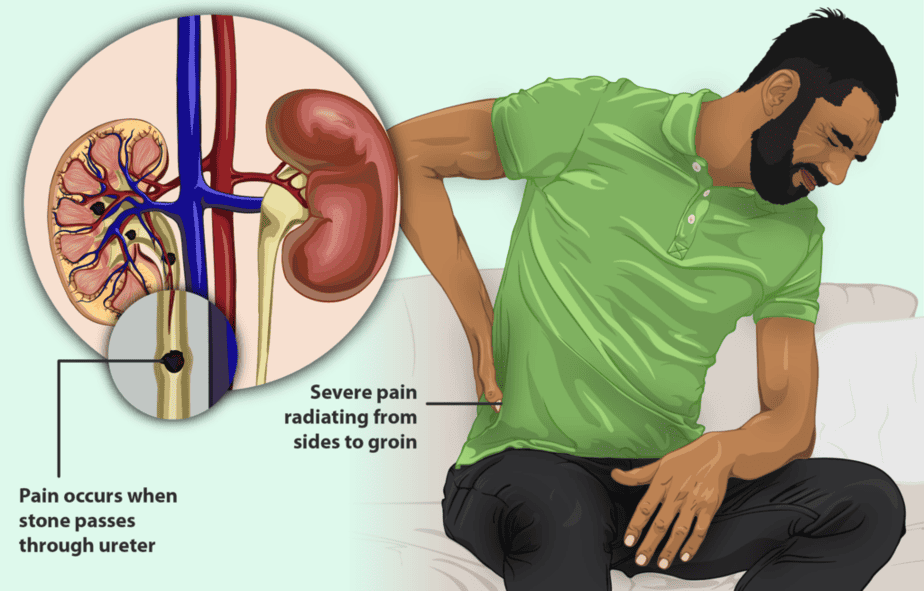
Most patients notice the condition when they feel pain or discomfort in the abdomen and lower back. This pain occurs as a result of the stone moving or causing irritation or blockage.
Usually, the stones pass with no additional treatment needed besides pain relievers to reduce discomfort. However, some serious cases in which the condition persists or causes complications, such as kidney infections, require additional medications or even surgery to remove them.
Causes
This condition occurs when too many crystal-forming minerals are present at a high concentration in the urine. Anyone can get them, but non-Hispanic white men are most at risk. Family history of kidney stone disease is also one of the main risk factors.
Dehydration, eating a diet high in protein, sodium, and/or sugar, and obesity are common metabolic factors that can increase your risk. Additionally, digestive surgeries, such as gastric bypass surgery, can affect how your body absorbs calcium and water and thus increase the chances of formation. Finally, other kidney diseases, certain medications (for migraines and depression) and supplements (such as vitamin C and calcium-based antacids) can also increase your risk.
A person can die from kidney stones. If the stone passes and an infection forms behind it, the infection can turn into an abscess, which can be fatal. Kidney stones can also cause renal issues that may lead to life-threatening complications.
Diagnosis
A doctor will want to know your medical history as those who previously had the condition are more prone to have it again. Your doctor may recommend diagnostic tests such as blood tests that can reveal high calcium or uric acid levels in your blood. These tests can help monitor overall loss of function and alert your doctor to additional health conditions such as inflammatory bowel disease.
Urine tests are another classic method to diagnose kidney function. These tests can assess whether there are too many minerals or few prevention substances in the urine. You may be asked to provide samples 1-2 days in a row.
If other tests are inconclusive, imaging may be used. X-rays are usually not used in this case unless the stones are expected to be very large. Ultrasounds and CT scans can generally reveal small to large stones in the urinary tract.
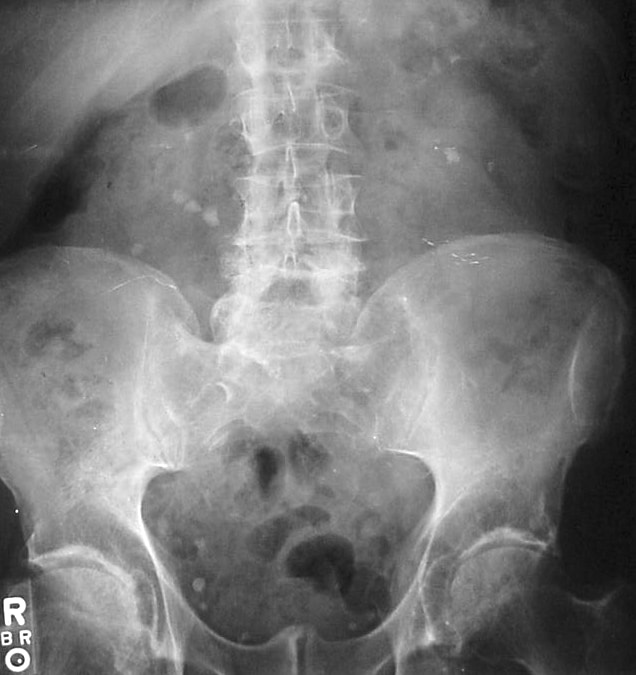
You may also be asked to urinate through a strainer to collect kidney stones that are present. This will allow your doctor to analyze the type of stones, which may allow them to determine the underlying cause.
Treatment
The treatment depends on the type and size of the calculi. Small stones usually pass with little to no additional treatment. To help with passing a kidney stone, recommended treatments as noted on Mayo Clinic’s website include:
Drinking water
Drinking 2 to 3 quarts of water per day will help keep your urine dilute and can even prevent additional formation. Normally, you should be drinking enough water to have minimal color or smell in your urine.
Pain relievers
Passing a small stone can cause some discomfort. You can take over-the-counter medications such as ibuprofen (Advil) or naproxen sodium (Aleve) to combat this.
Medications
Alpha-blockers are designed to help pass stones by relaxing the muscles in the ureter, allowing stones to pass more quickly and with less discomfort.
Large kidney stones can often cause serious symptoms such as bleeding and urinary tract infections. If these become too large to pass on their own, your doctor may recommend additional treatment.
Sound waves
A procedure called extracorporeal shock wave lithotripsy (ESWL) uses strong vibrations to break apart large kidney stones into smaller pieces to help them pass quickly. This process can take between 45-60 minutes and can be uncomfortable. Sedation or light anesthesia may be used. ESWL can also cause blood in the urine, bruising on the back or abdomen, bleeding around the kidney and other adjacent organs, and discomfort as the stone fragments pass through the urinary tract.
Cystoscopy and ureteroscopy
The doctor will use a cystoscopy to look in your urethra and bladder for a stone during this procedure. A longer and thinner instrument known as a ureteroscope will allow imaging in the kidneys and ureters. If a stone is found, the doctor will typically break it apart into smaller pieces so that it can pass through the urine. Anesthesia is necessary, but patients can usually go home on the same day.
Surgery
During a procedure called percutaneous nephrolithotomy, a surgeon will use small telescopes and instruments inserted through a small incision in your back to remove large kidney stones unable to pass through the urine. This procedure requires general anesthesia and requires several days of recovery in a hospital. Doctors will usually only recommend this approach if ESWL is unsuccessful.
To prevent kidney stones, doctors usually recommend lifestyle changes such as:
- Increasing your fluid intake, especially water
- Changes in diet that reduce oxalate, animal protein, minerals, and salts
- Ask your doctor before starting or continuing calcium supplements
You can find more information on the National Institution of Diabetes and Digestive and Kidney Diseases.
If you liked this article, you should check out our other posts in the Nebula Research Library!
June 13, 2023
